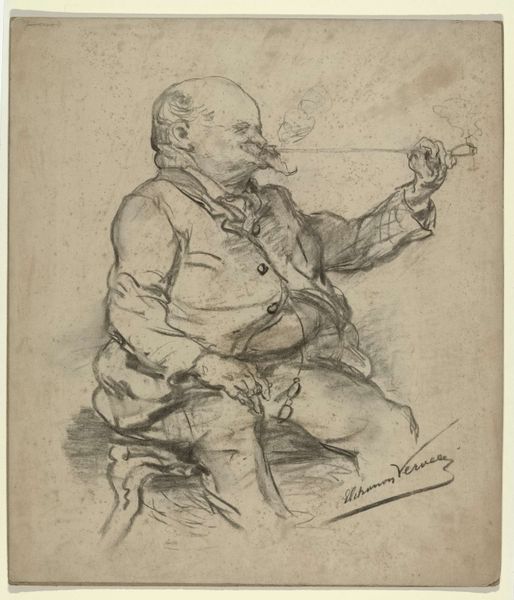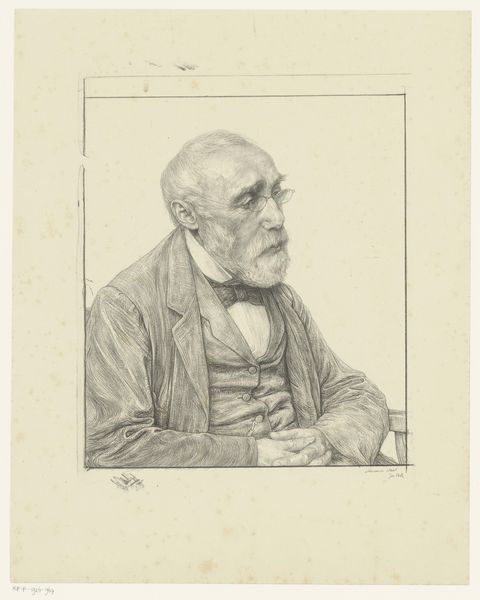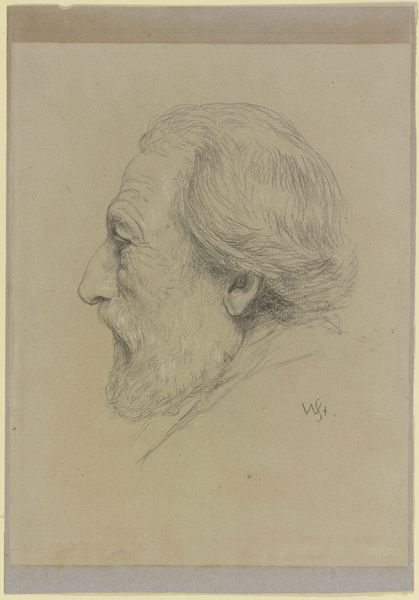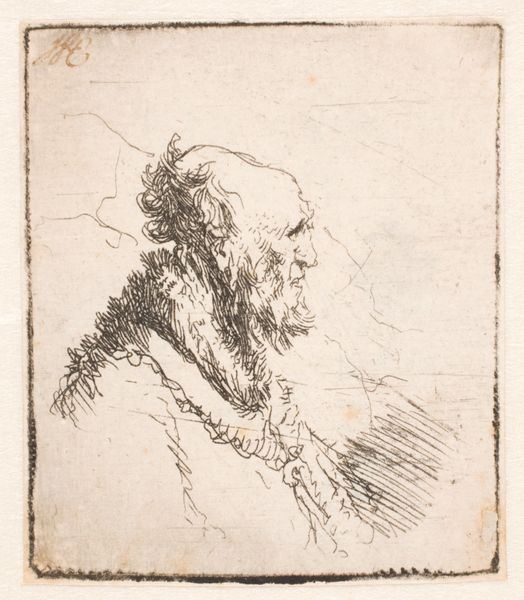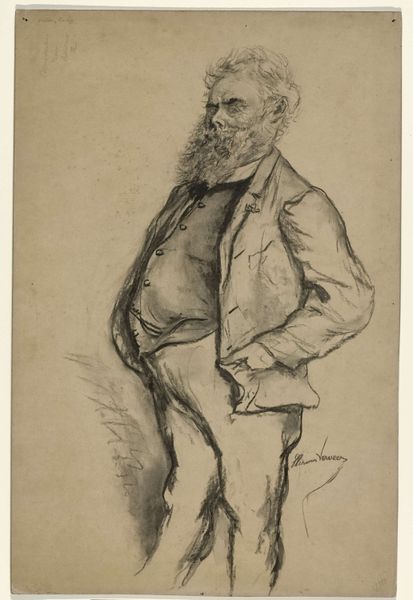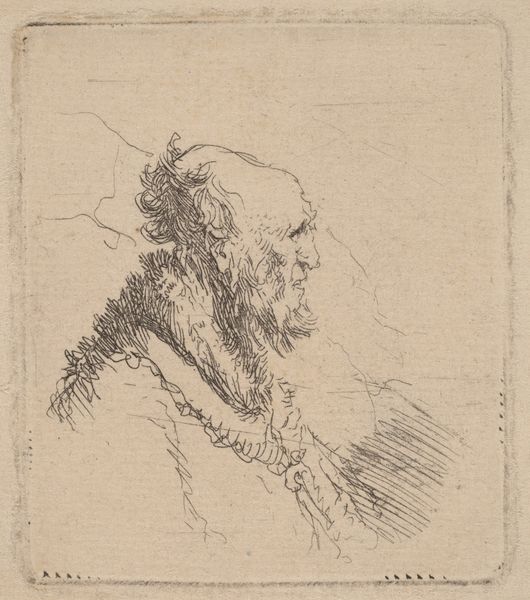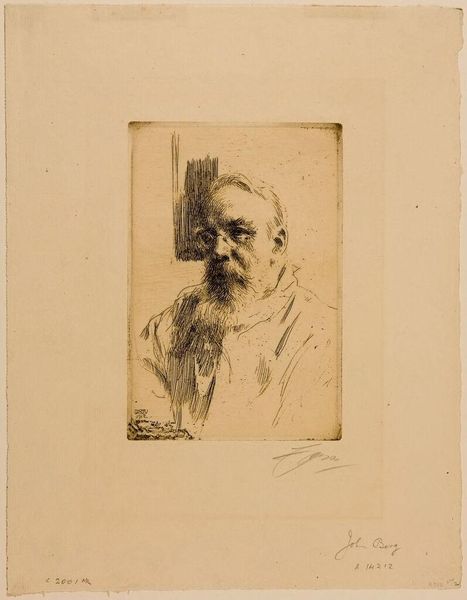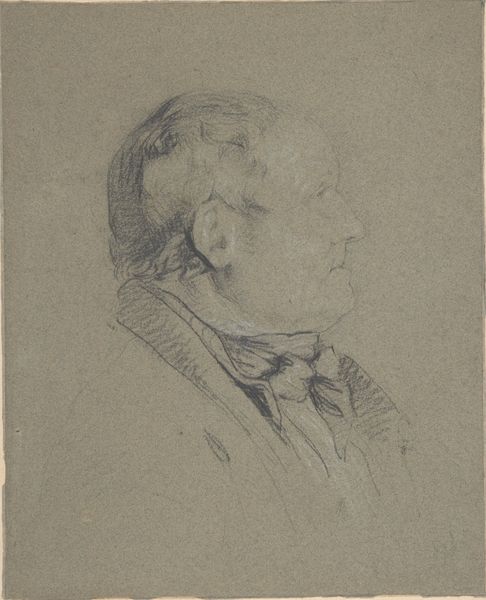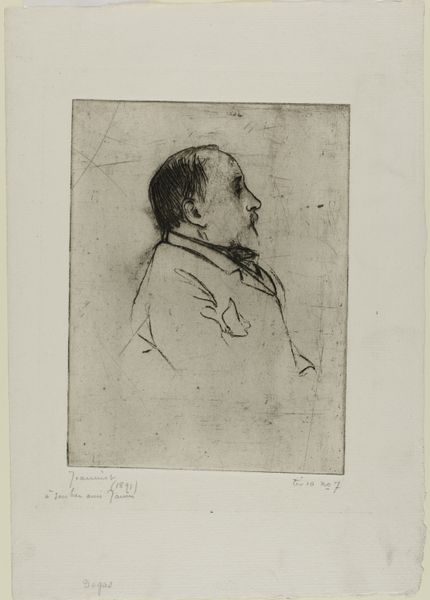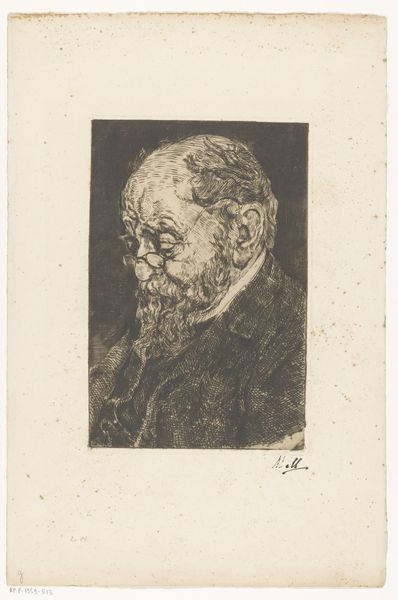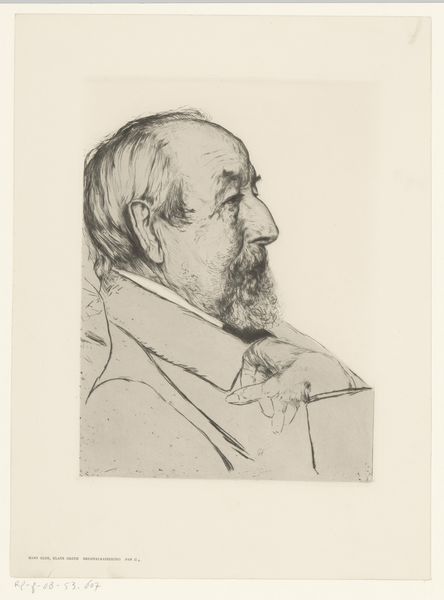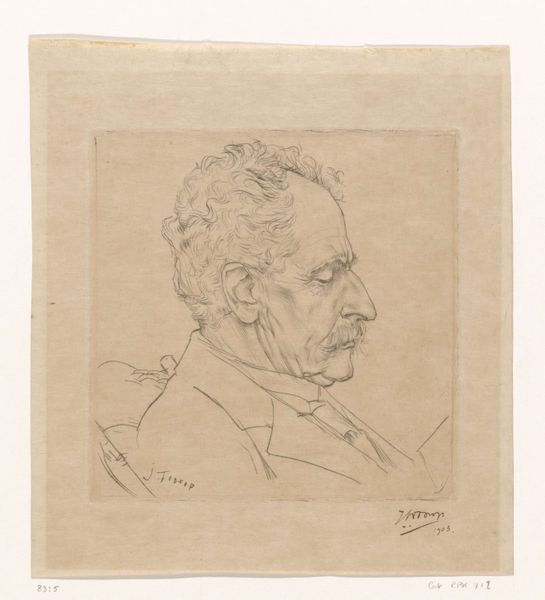
Portret van de kunstschilder en fotograaf Maurits Verveer 1836 - 1900
0:00
0:00
elchanonverveer
Rijksmuseum
Dimensions: height 612 mm, width 471 mm
Copyright: Rijks Museum: Open Domain
Curator: This charcoal drawing, held here at the Rijksmuseum, offers us a glimpse of the painter and photographer Maurits Verveer, crafted between 1836 and 1900, possibly as a self-portrait. Editor: He looks like he’s peering into another dimension with that pipe; it gives a kind of melancholic haze to the whole piece. It's quite striking in its subdued romanticism. Curator: Absolutely. You notice the toned paper right away. Verveer’s employment of charcoal in such detail suggests a deliberate consideration of the medium’s capabilities— its accessibility but also its capacity for rendering nuances of light and shadow and therefore feeling. What might the ready availability of charcoal mean for a painter’s approach to preparatory sketches or even finished pieces? Editor: I'm intrigued by his grip on the pipe; it seems more like he is holding it captive. Perhaps that captures the relationship between an artist and his tools—or perhaps his vices. Curator: Precisely. Consider the implications: portraiture, often a commission-based practice, here intersects with what might be an internal investigation. Did Verveer produce this drawing as a preliminary sketch for a painting, a means to contemplate his self-image and how artists were perceived and rewarded during his time, or was it purely for artistic exploration and the intimacy between creator and material? Editor: Or maybe it’s just how he relaxes after a long day wrestling with cameras and chemicals in the darkroom! There is something intimate about drawings that paintings often lack, wouldn’t you agree? They capture a mood so viscerally. It almost invites the viewer to speculate or project... Curator: I appreciate that reading. Reflecting on materiality again, charcoal's ephemeral nature brings a beautiful transience to the themes explored within the portrait itself. Verveer might then be telling us that identity—artistic or otherwise—is always in a state of creation and dissolution, dependent on specific contexts and acts of interpretation, as in drawing on the blank page, that requires physical labor. Editor: A dance of dust and dreams. And with that thought, I feel strangely satisfied looking at it all now; all that speculation opens some possibilities to ponder about perception, portraiture, and fleeting moods, to carry with us outside this hall, into other days. Curator: Indeed. Examining process alongside artistry unveils intricate dialogues about who gets to make art and why; It certainly elevates our viewing beyond merely admiring a nice drawing.
Comments
No comments
Be the first to comment and join the conversation on the ultimate creative platform.
